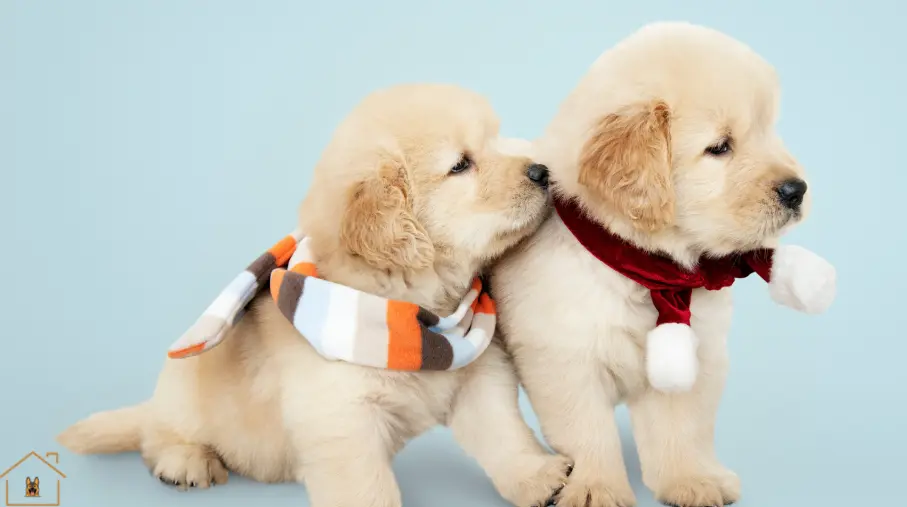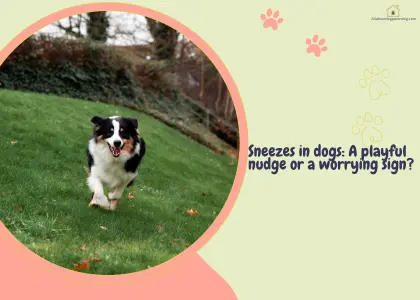How to Socialize a Puppy with Other Dogs and People
Bringing a puppy home is exciting for sure. But it is also the beginning for a series of decisions you now have to make, each determining your pet’s personality, temperament, overall well-being, and future. The one thing that I cannot stress enough is the importance of early puppy socialization, right off the bat. Why? Puppies are like sponges in the first 3–16 weeks of their lives, and the experience they take in during this time can be the difference between a relaxed adult dog and one who’s fearful or aggressive. That’s why early socialization with a variety of people and calm dogs is a must.
In this guide, I’ll show you exactly how to socialize a puppy and everything you need to be mindful of to make these meet-and-greets safe for your little furry baby, touching upon dog socialization tips for meeting adults, kids, seniors and even people in uniforms, plus strategies for friendly dog playdates.
Why Early Socialization Matters
Puppies have a narrow critical period for socialization that typically lasts from 3–16 weeks of age. During this time their brains eagerly absorb new sights, sounds, people and pets. If you expose them positively, they learn that the world is safe. Studies show pups socialized early are far less likely to develop fear, anxiety or aggression later.
For example, a puppy that has met dogs will not be reactive around other dogs as an adult. Likewise, early vet visits can take the edge off the experience. The same goes for strange noises, unfamiliar people, and settings. In my experience, a socialized pup will wag their tail and be open and approachable even in unfamiliar settings whereas one that hasn’t been socialized may cower in fear, or worse, lash out.
Preparing for Puppy Socialization
Before you jump into introducing your puppy to new people and dogs, it’s crucial to lay a solid foundation. Preparing for puppy socialization means making sure your pup is healthy, has started vaccinations, and feels safe in familiar surroundings. These early steps should not be overlooked because they make the experience less overwhelming for your pet.
I always prefer starting a pup’s socialization journey at home, starting off by introducing them to new sounds, textures, and safe spaces like dog crates for puppy. These small steps create a sense of security that carries over into the outside world.
Make sure the health and vaccines are in place
Before venturing out, get a clean bill of health from your vet and discuss a socialization plan alongside vaccinations. In the past, it was established practice to wait introducing a puppy to new surroundings, people, and especially other animals until their basic vaccinations were complete, however, veterinarians now stress that the risk of delaying socialization often outweighs the risk of disease.
Once your puppy has had the first round of vaccines, you can cautiously begin exposure. Always practice hygiene and only allow interactions with healthy, fully vaccinated dogs. You can also consider carrying your pup or using a stroller for short trips outdoors to introduce sights and sounds safely. Balancing caution with exposure is key here. Read more about puppy care tips for bringing a new puppy home
Work in safe environments
Begin socializing in familiar, controlled spaces like your home or quiet backyard. You can consider setting up a puppy zone. It could be a small pen or gated area with a comfy crate, water and toys where all initial interactions take place. This approach has served me well over the years, and I get the sense that my puppies find it easier taking in new experiences in their safe space.
Keep your puppy on a leash and then gently introduce new stimuli. You can start with household sounds like the doorbell or a vacuum at low volume and reward curiosity. You can continue to do this with a range of different objects like an open umbrella, a suitcase, a toy, and so on. Praise your pet for their calm interest every time.
The next step can be walking your puppy across different surfaces like grass, tile, carpet, wood. These calm, positive first experiences at home set the stage for greater adventures ahead. Read more about how to puppy-proof your home.
Socializing Your Puppy with People
Once your dog is comfortable with new sounds, sights, and textures, it’s time to take the next step, and bring humans into the mix. Here is how to socialize a puppy with new people:
Types of people to introduce to your puppy
The idea behind socializing your puppy to new people is to make sure they are not fearful or reactive toward strangers. Here’s how you can achieve that,
- Expose your pet to a wide range of people in a positive way
- They must meet men and women of different heights and builds, as well as children, both toddlers and older kids, and seniors
- Let your puppy see people in different attires and outfits, if you don’t want them to lose their nut every time a mail man or courier delivery person walks up to your doorstep
- You can invite people, friends or family, to meet your puppy at home
- Let your puppy interact with strangers outside.
- In either setting, have the person interacting with them gently kneel or sit calmly, let your puppy sniff their hands, then give treats.
Each friendly encounter, be it with a neighbor with a beard, a stranger with glasses, a child with a balloon, builds confidence and helps your pup understand that the world is made up of a diverse mix of people, which they don’t need to be scared or wary of.
Tips for positive human interactions
Positive human interactions start with trust and patience. Don’t rush things. Let your puppy set the pace. I’ve found that when strangers kneel down and let the pup come to them, the experience is far less intimidating. Use high-value treats, a cheerful tone, and short, controlled introductions to make meeting people feel like a game, not a threat. Here is how to achieve it:
- Introduce one at a time: Invite a new person over by themselves rather than a crowd. Keep the first meeting short and sweet in a quiet room
- Let your pup lead: Allow your puppy to approach and sniff the person first. Never force petting or hugs. If your pup backs away, don’t pull them
- Use treats and praise: Reward calm, curious behavior immediately with high-value treats and praise. A sit or gentle eye contact earned with treats teaches your puppy that new people are rewarding
- Avoid busy places: While you can take your puppy around in bustling spaces like markets or restaurants, avoid using these as a setting for socialization. If your pup is already overwhelmed by the sights and sounds, they may not do well meeting someone new
- Watch your pup’s body language: Pay close attention for signals like cowering, tail-tucking, whale-eyes or lip-licking. If your puppy seems anxious or overwhelmed, step back
Socializing Your Puppy with Other Dogs
Socializing your puppy with other dogs is a big milestone and one that needs to be handled thoughtfully. Not every dog is a good match for a young pup, so choosing calm, fully vaccinated companions is key. In the early weeks, I skip the dog park and arrange one-on-one meetups with dogs I know and trust.
Supervised, short play sessions help puppies learn canine body language, play etiquette, and boundaries. You’re not just teaching them how to play, you’re shaping how they’ll behave around other dogs for life. When done right, these early interactions set the foundation for puppy social behavior and safe, confident dog-to-dog relationships. Conversely, if these early interactions don’t go as planned or are lacking altogether, you risk ending up with a dog who is highly reactive, even aggressive, toward other dogs.
How to choose the right dog partners
Like I said, picking safe, reliable playmates for your pup is the key to getting the how to socialize a puppy with other dogs part of the puzzle right. The ideal dog companion is fully healthy and vaccinated, with a friendly, gentle personality. Start with dogs you already know: maybe a calm adult dog owned by a friend or a littermate.
Puppy classes are also good since they typically check vaccines. Steer clear of unpredictable off-leash situations. For example, avoid taking your pup to a busy dog park or trail early on, where uncontrolled dogs and germs are everywhere. Instead, arrange one-on-one playdates in a fenced yard or a quiet park. Match dogs of similar size or energy so your puppy isn’t accidentally hurt or intimidated.
Supervised interaction techniques
Ensuring that your puppy mingles with the right dogs is only one part of the process. It’s equally important that the interaction is a positive one. Here are some ways you can help:
- Meet on neutral ground: Introduce on a leash in a quiet, unfamiliar outdoor space like a backyard or empty parking lot so neither dog feels territorial
- Walk side-by-side: Start with the dogs about 10–15 feet apart, then slowly walk them in parallel. Reward them for looking back at you or staying relaxed. This builds positive associations as they get closer
- Allow a brief sniff greeting: If both seem calm, you can let them sniff each other nose-to-tail while still on leash. Only let them stand face-to-face for a few seconds, so neither fixates or feels trapped
- Keep it short and sweet: Limit new meet-ups to just 5–10 minutes at first. When the play is fun and relaxed, step in and end the session on a high note with a treat or a toy
- Watch body language closely: If you see stiffening, growling, raised hackles or hard stares from either dog, calmly separate them. Redirect overly rough play with a brief timeout and try again later
Gradual Exposure to New Environments
Once your puppy is comfortable at home and with people and dogs, slowly broaden their world. Start with everyday outings:
- Short walks on quiet sidewalks
- Visits to a friendly neighbor’s home
- Spending time at a local café patio
Gradually introduce normal urban sounds like traffic, children playing, TV or music in the next room. Vary the setting and your routine so the element of new experiences isn’t lost. In raising my puppies, I’ve found that keeping a mental, or even an actual, socialization checklist to cover one new thing each day helps keep the experiences diverse.
For example, I might check “car ride” one day, “walking on a new surface” the next, and then a “dog-friendly store visit” on the weekend. Once the basic ground of new exposures is covered, it’s time to build up on the experiences. For example, you may consider walking on busier streets, visiting parks, or attending a puppy class. Each novel experience should be introduced in small doses, and you have to be in tune with how your puppy is feeling and prepared to dial down or walk away if they’re overwhelmed or over stimulated.
Common Puppy Socialization Mistakes to Avoid
Even with the best intentions, it’s easy to trip up during puppy socialization. One of the most common mistakes I see is moving too fast. Flooding your pup with new people, dogs, or places before they’re ready can overwhelm them and lead to negative associations, which defeat the whole purpose of early puppy socialization.
On the other hand, waiting too long means you risk missing that key early window of molding puppy social behavior. Coddling fearful behavior or punishing a scared pup can backfire, reinforcing anxiety instead of easing it. The trick is to find that sweet spot: consistent, gentle exposure without pressure. You can strike that balance when figuring on how to socialize a puppy the right way by avoiding these common mistakes:
- Rushing too much: Introducing too many new sights, sounds or people at once can overwhelm your puppy. Take it slowly and pay attention to their body language
- Delaying socialization: Waiting until all vaccines are done is a common error. Experts warn that waiting too long can do more harm than good
- Coddling fear: When a puppy is scared, smothering her with attention or excessive treats can unintentionally reinforce the fear
- Punishing anxiety: Never scold or force a frightened puppy to greet someone or another dog. Punishment will only deepen her fear and breed mistrust
- Inconsistency: Socialization isn’t a one-time activity, but a work in progress. Sticking to a routine of exposure, even after the first few weeks, is key
10-Step Puppy Socialization Checklist
Now, I don’t want you to be as overwhelmed by the puppy socialization routine as your furry baby would be if left to fend for themselves in an unfamiliar place, surrounded by stranger face, sights, and noises. That’s why I’ve put together this 10-step socialization checklist that can take the guesswork out of those crucial first weeks. I’ve followed this simple routine with every puppy I’ve raised, and it’s helped me stay consistent without feeling overwhelmed. Think of it as building blocks for confidence. You don’t need to rush or for the process to be perfect. Just aim for steady progress each day. This checklist gives your puppy a well-rounded foundation and ensures you’re covering all the basics without missing key social milestones.
- Vet Check: Schedule a wellness exam and start vaccinations at around 8 weeks old. This ensures health and gives the go-ahead for outings
- Safe Home Zone: Create a puppy-proof “socialization area” at home with a crate or pen, toys and water. Let your puppy acclimate to her safe space
- Gentle Sounds: Play common noises like vacuum, doorbell, TV at low volume. Reward calm behavior with treats to build positive associations
- Daily New Person: Introduce your puppy to one new friendly person each day and reward the puppy for a positive interaction
- Short Walks: Take brief outdoor walks in calm areas. Use a leash, and offer treats for sniffing grass, pavement, and sidewalks
- Explore Textures: Let your pup walk on different surfaces like tile, wood, grass, sand and praise her for being brave. This teaches her not to fear new textures
- Doggie Playdate: Arrange a 5–10 minute, leashed meeting with a known vaccinated, friendly dog and let the dogs communicate with each other. Start with a short sniff-and-walk; gradually build to a little off-leash play in a secure yard
- Busy Environment: Visit a pet-friendly store, outdoor café or sidewalk area. Sit quietly with your puppy on leash and let her watch people and other dogs from a distance
- Puppy Class or Playgroup: Enroll in a supervised puppy class or arrange a group Doggie Playdate. These structured settings allow safe social play and basic obedience practice
- Positive Reinforcement: Throughout all these steps, reward every calm, curious or brave reaction with praise and treats
Conclusion
Socialization is an ongoing journey, not a one-time task. Remember that consistent, gentle exposure is what transforms a shy puppy into a confident dog. Stay patient and flexible: watch your puppy’s body language and let her proceed at her own pace. Celebrate each small victory, be it a wagging tail during a new encounter or relaxed body at a noisy street, as progress. In my experience, the effort is absolutely worth it. With time, patience and positive reinforcement, your puppy will grow into a friendly, well-adjusted companion who enjoys life. Keep at it, and you’ll both reap the rewards of a secure, happy dog in the years ahead.







